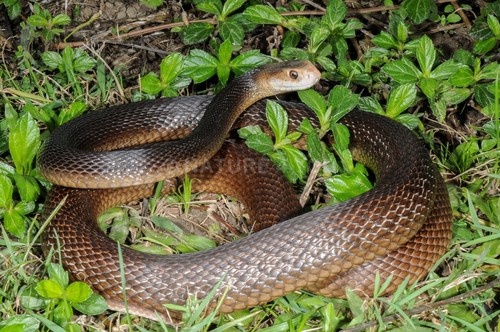
Coastal Taipan
Meet the Coastal Taipan (Oxyuranus scutellatus), an agile predator of Australia’s rainforests. With its potent venom, it plays a critical role in controlling rodent populations. This sleek, swift snake is renowned for its deadly efficiency, making it both feared and fascinating among reptile enthusiasts.
Length: 1.8288 - 2.8956 m
Size
Medium
Aggression
Least Concern
Conservation Status
Stable
Population Trend
Characteristics
Oxyuranus scutellatus, commonly known as the Coastal Taipan, is a highly venomous snake native to the coastal regions of northern and eastern Australia and the island of New Guinea. It thrives in warm, humid environments such as rainforests and sugarcane fields. Known for its agility and potent venom, it is among the deadliest snakes in the world.
Distribution Range of the Coastal Taipan
The Oxyuranus scutellatus, commonly known as the Coastal Taipan, is native to coastal regions of northern and eastern Australia and the island of New Guinea. In Australia, its range includes the eastern coastal areas of Queensland, stretching from the Cape York Peninsula down to northern New South Wales. It is also found in Papua New Guinea.
Coastal Taipan's Habitat
Environmental Conditions
The Coastal Taipan typically inhabits warm, humid environments. It is commonly found in wet and dry sclerophyll forests, rainforests, and open woodlands. These regions are characterized by a tropical climate with high humidity and significant annual rainfall. The species prefers areas with dense vegetation that provide ample cover and hunting grounds.
Ecological Niche
The Coastal Taipan occupies the ecological niche of a top predator in its habitat. Its diet primarily consists of small mammals, especially rodents, which it hunts with its highly venomous bite. The snake is adapted to both terrestrial and arboreal lifestyles, allowing it to exploit a range of prey in different environments. Its presence helps regulate the populations of its prey species, maintaining ecological balance in its native regions.
Copyright @ Nature Style Limited. All Rights Reserved.
 English
English